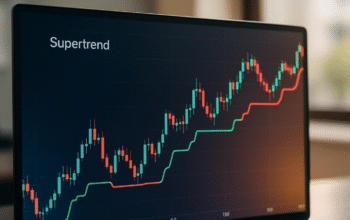Market volatility does not always begin with earnings or inflation. Sometimes, it starts with diplomacy or the breakdown of it. In 2025, tensions between the United States and China have escalated, impacting everything from trade policy to technology restrictions. These developments are no longer isolated headlines. They are daily catalysts shaping the movement of major indices across the globe. For traders focused on indices trading, staying aware of these dynamics is essential.
Every Policy Shift Alters the Playing Field
When political friction rises, markets begin to reassess risk. Technology sectors, particularly those exposed to semiconductor supply chains, react quickly. Indices like the Nasdaq become highly sensitive to any mention of new restrictions, sanctions, or export controls.
Similarly, the Dow Jones or S&P 500 may reflect broader economic concerns if tariff threats resurface or diplomatic talks break down. Even the FTSE 100, though geographically removed, often responds indirectly due to its global exposure.
Traders must now factor geopolitical headlines into daily analysis, just as they would employment reports or interest rate decisions.
Volatility Increases as Clarity Decreases
One of the most challenging aspects of geopolitical risk is unpredictability. A tweet, leaked memo, or press conference can send futures swinging within minutes. This reactive volatility creates both danger and opportunity.
For traders in indices trading, this means adapting to faster conditions. Intraday range expansions, false breakouts, and rapid reversals become more common. The solution lies in flexibility, reducing position size, tightening risk controls, and waiting for confirmation before engaging with aggressive moves.
Short-term trades may become more frequent, but each must be supported by clear price action rather than reaction to every news alert.
Safe Havens and Defensive Plays Gain Momentum
Periods of tension often shift capital into defensive assets. Traders frequently see increased buying in sectors like utilities, consumer staples, and healthcare. At the same time, indices weighted toward risk-sensitive stocks such as the Nasdaqexperience sharper fluctuations.
Gold, U.S. Treasury bonds, and currencies like the Japanese yen also attract safe-haven flows. These intermarket movements influence index behavior indirectly, signaling where capital is flowing and from which sectors it is exiting.
Recognizing these patterns adds depth to strategy and allows traders to anticipate rather than chase market moves.
Event Timing Creates Strategic Entry Points
Even during tense periods, the market offers rhythm. Scheduled meetings between U.S. and Chinese officials, trade deadlines, or planned policy announcements often align with price setups. Traders who track these dates and monitor price action in advance can structure trades around the potential for breakout volatility.
For example, if a summit between diplomats is scheduled for the coming weekend, traders might observe consolidation in indices throughout the week. A resolution could trigger a breakout, while a breakdown in talks may lead to a sharp gap on the next open.
In indices trading, event-driven setups are most effective when combined with technical and sentiment analysis.
Confidence Grows With Context
Tensions between superpowers will always create uncertainty, but that does not mean traders must sit on the sidelines. By framing geopolitical events within a broader market context, it becomes easier to manage trades without emotional bias.
Watching sector rotation, volatility metrics, and price behavior around geopolitical headlines builds familiarity. Over time, this creates a sense of pattern recognition that helps remove panic from the process.
For active index traders, 2025 presents both risk and opportunity. U.S.-China relations will likely continue to affect market structure, asset allocation, and sector performance. Those who stay informed and respond strategically will find that volatility is not an obstacle, it is a catalyst.









